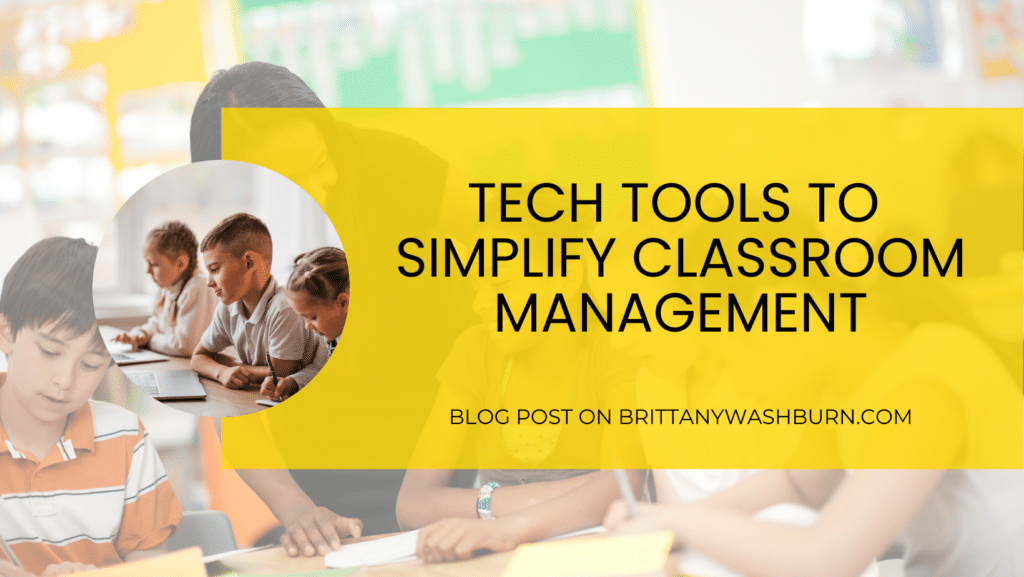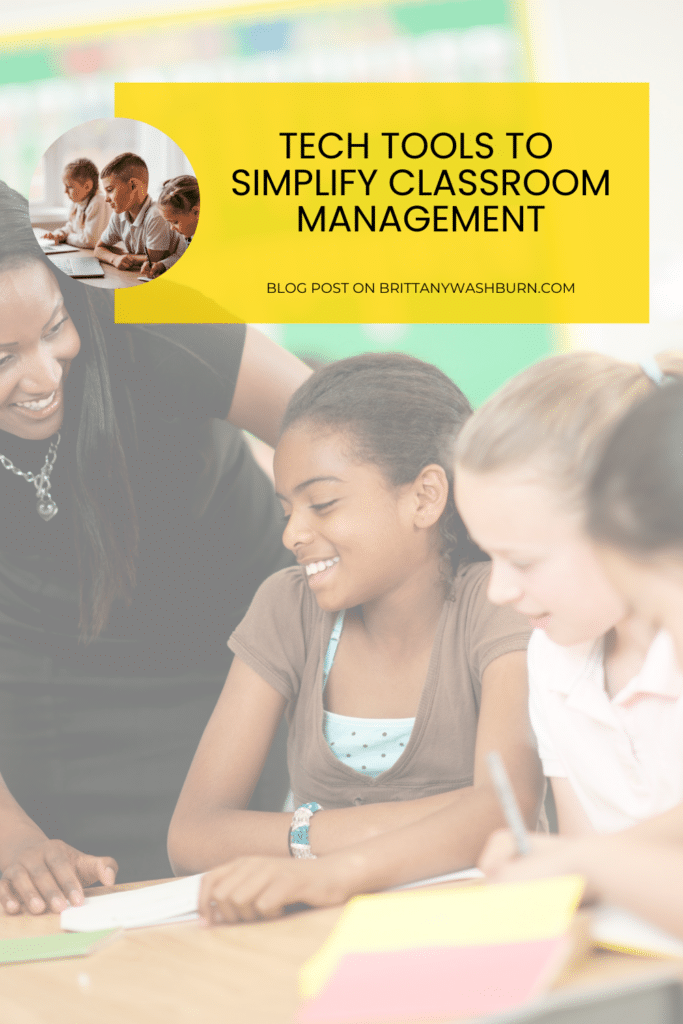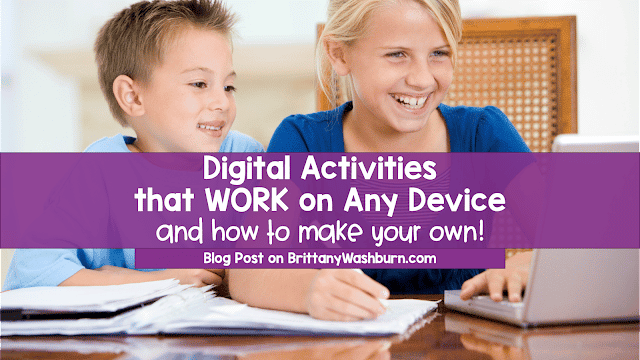Tech Tools to Simplify Classroom Management

Managing an elementary classroom can be a challenging task, especially with a large number of students and different learning needs. Thankfully, technology has made classroom management a lot simpler and more efficient. In this article, we will explore different tech tools that can help elementary school teachers manage their classrooms with ease. From digital classroom management strategies to student engagement and behavior management tools, we will cover everything you need to know to make your classroom more organized, engaging, and effective. So let’s dive in and discover the power of technology in elementary classroom management!
Introduction to Tech Tools for Classroom Management
Managing an elementary classroom can be hectic at times, and teachers often find themselves struggling to keep up with a multitude of tasks. However, with the help of digital tools, classroom management can be made easier, more efficient, and more effective. In this article, we will discuss some of the top tech tools available that can simplify and streamline classroom management for elementary school teachers.
Why Use Tech Tools for Classroom Management?
Technology has revolutionized the way we live and work, and the classroom is no different. By incorporating tech tools into their teaching, teachers can provide an engaging and interactive learning experience for their students. Tech tools can help teachers to manage their classroom more efficiently, save time, and streamline their administrative workload. Additionally, using tech tools can help teachers to better understand their students’ progress and provide personalized feedback, leading to better academic outcomes.
Overview of Tech Tools for Classroom Management
There are a plethora of tech tools available to help teachers manage their elementary classrooms effectively. These tools can be divided into three main categories: digital classroom management strategies, time management, and organization tools, and student engagement and behavior management tools. In each of these categories, we will discuss some of the most useful tech tools available.
Digital Classroom Management Strategies
Digital classroom management strategies can help teachers to create, manage, and grade assignments, communicate with students and parents, and create interactive and engaging digital lessons.
Creating and Managing Digital Assignments
Tools such as Google Classroom, Seesaw, and Edmodo allow teachers to create and distribute assignments digitally, reducing the amount of paper needed and making it easier for students to complete and submit their work. Additionally, these tools provide a centralized location for teachers to grade and provide feedback on assignments.
Using Learning Management Systems (LMS)
LMS software such as Canvas and Blackboard provide a centralized location for teachers to manage their courses, including grade books, assignment distribution, and communication with students.
Online Classroom Discussion Strategies
Tools such as Padlet allow teachers to create online discussion boards and interactive lesson plans that encourage student participation and engagement.
Time Management and Organization Tools
Effective time management and organization are essential for teachers to manage their workload and ensure that they are meeting their instructional goals.
Managing Class Schedule and Assignments
Tools such as Planboard and Google Calendar can help teachers to manage their schedules and ensure that they are meeting all of their instructional goals.
Classroom Task Management Tools
Tools like Trello and Asana can help teachers to manage their tasks and to-do lists, making it easier to stay organized and meet their instructional goals.
Online Calendar and Reminder Tools
Remind and Google Keep can help teachers to send reminders to students and parents about assignments, important dates, and events, ensuring that everyone stays on track.
Student Engagement and Behavior Management Tools
Engaging students and managing their behavior are critical elements of effective classroom management.
Online Gamification Tools
Tools like Classcraft and Kahoot use game-based elements to make learning more engaging and fun for students. These tools can also help teachers to monitor student progress and offer personalized feedback.
Classroom Polling and Survey Tools
Poll Everywhere and Mentimeter can help teachers to gather feedback from students and assess their understanding of lesson content, making it easier to tailor instruction to individual needs.
Virtual Reward and Recognition Systems
Tools like Class Dojo and Kickboard can help teachers to recognize student achievements and provide positive reinforcement for good behavior, leading to a more positive and productive learning environment.
Assessment and Grading Tools
Assessment and grading are essential components of any classroom management system. With the help of technology, teachers can streamline the grading process and provide timely feedback to students. Here are some tech tools that can simplify assessment and grading in the classroom.
Online Formative Assessment Tools:
Online formative assessment tools like Kahoot, Quizlet, and Socrative are great for assessing student learning in real-time. These tools provide quick feedback and allow teachers to adjust their instruction accordingly.
Automated Grading Tools:
Automated grading tools like GradeCam and ZipGrade can significantly reduce the time and effort required to grade paper-based assessments. These tools use image recognition technology to scan and grade multiple choice tests.
Customizing and Sharing Grade Reports:
Tools like Google Sheets and Microsoft Excel enable teachers to customize and share grade reports with students and parents. These tools allow for easy tracking of student progress and enable teachers to communicate effectively with parents.
Communication and Collaboration Tools
Communication and collaboration tools are crucial for ensuring that students are engaged and connected in the learning process. Here are some tech tools that can facilitate effective communication and collaboration in the classroom.
Instant Messaging and Chatting Tools:
Tools like Remind and ClassDojo enable teachers to communicate with students and parents in real-time. These tools can be used to send reminders, announcements, and feedback.
Video Conferencing Tools:
Video conferencing tools like Zoom and Skype can be used to facilitate virtual classroom discussions and group projects. These tools enable students to connect with their peers and teachers regardless of geographic location.
Collaborative Whiteboard Tools:
Collaborative whiteboard tools like Google Jamboard and Microsoft Whiteboard are great for interactive classroom activities. These tools enable students to collaborate on group projects and brainstorm ideas together.
Technology Implementation Tips for Classroom Management
Implementing technology for classroom management can be challenging, but with the right approach, it can be a success. Here are some tips for effectively implementing tech tools in the classroom.
Choosing the Right Tech Tools for Your Classroom:
Think carefully about your classroom needs and the goals you hope to achieve with technology. Consider factors like ease of use, required training, cost, and support before making a decision.
Implementing Tech Tools for Classroom Management:
Once you’ve chosen the tech tools that work best for your classroom, introduce them to students gradually. Provide clear instructions, and be sure to give students ample time to learn and practice using the tools.
Training and Support for Tech Tools:
Ensure that you and your students receive adequate training and technical support for the tech tools you choose. Consider reaching out to your IT department or the tool’s customer service team for additional support.
Conclusion and Future Implications of Using Tech Tools for Classroom Management
As technology continues to evolve, the implications for classroom management are exciting. Here are some thoughts on the benefits and challenges of using tech tools for classroom management and future trends to watch.
Benefits and Challenges of Using Tech Tools for Classroom Management:
Tech tools can provide numerous benefits, including increased student engagement, improved communication, and streamlined grading. However, challenges like technical issues and student misuse can also arise.
Future Trends in Classroom Management Tech Tools:
Machine learning and artificial intelligence are expected to play an increasingly significant role in classroom management. These technologies could be used to provide personalized learning experiences, automate grading, and develop predictive analytics for early intervention.
In conclusion, integrating tech tools into your elementary classroom management strategies can make a world of difference in how you manage your students and their learning. With a plethora of tools and strategies available, you can customize your classroom management approach to fit your teaching style and the needs of your students. By utilizing these tech tools, you can create a more organized, efficient, and engaging classroom environment that fosters student success. So, take the time to explore these tools, and see how they can help you manage your classroom with ease.

FAQs
What if I’m not very tech-savvy? Can I still use these tools in my classroom?
Absolutely! Most of these tools are designed to be user-friendly and intuitive, even for teachers who have limited experience with technology. Additionally, many of them come with tutorials, prompts, and customer support resources to help you get started.
Will I have to spend a lot of money to implement these tools in my classroom?
Not necessarily. While some tools may require a subscription or purchase, many others are free or offer a freemium model with some basic features available at no cost. Additionally, you can often find funding or grants to help support technology purchases for your classroom.
Are these tools suitable for all grade levels?
While many of these tools are designed with elementary classrooms in mind, some may be more appropriate for certain age groups or subject areas than others. It’s important to do your research and experiment with different tools to find the ones that work best for your students.
How do I know which tools are right for my classroom?
Start by identifying the specific challenges and goals you have for your classroom management. Then, research different tools and read reviews from other teachers to see how they have been used successfully. Finally, experiment with different tools and strategies to find the ones that work best for you and your students.

Top 8 Apps and Programs for Streamlining Classroom Management and Assessment
The integration of technology has become the underpinning which supports teachers as they manage their…
5 Ways to Incorporate Technology into Daily Classroom Routines
Chromebook Care Tips for Teachers
Elgin, IL – 04/02/2020: A chromebook being used at home for a remote classroom during…
PBIS-Friendly Consequences
PBIS stands for Positive Behavior Interventions and Supports. It is an approach that is usually…
Tips for Helping Students with Disabilities Get the Most Out of Your Gen Ed Tech Class
Students have such a wide range of abilities that it can be very challenging to…
Flexible seating guide for computer lab teachers
Incorporating flexible seating in computer labs has been gaining popularity among educators who seek to…














